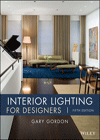A sunny morning at the new Haus der Forschung in Vienna brings more than another day’s work. Through a system of mirrors, prisms, and fiber cables, sunlight itself is funneled into the foyer. Snaking through the Forschung ceiling is the latest experiment in heliostatic lighting—bringing the sun inside the building.
Heliostats are mirror arrays that track the sun, following preprogrammed sequencing directions from software or responding to exterior-mounted sensors. Sunlight can be reflected from a large, high-quality, žroof-mounted circular tracking mirror to a secondary mirror or mirrors, and then directed inside a building, letting sunshine appear as if it were provided by electrical sources.
The mirrors have been around for decades. However, only recently, with increased interest in green energy and CNC cutting processes, which have reduced the costs of machining specialty optics, have architects begun to seriously consider using the mirrors for light and energy sources.
The designers James Carpenter and Davidson Norris, of New York’s Carpenter Norris Consulting, have recently installed heliostats on a residential tower in Battery Park City. The mirrors bring daylight into a portion of the new Teardrop Park, a 2-acre park designed by landscape architect Michael Van Valkenberg, that would otherwise escape the path of the sun. Eight feet in diameter, the mirrors focus light that is 90 percent of the brightness of the sun onto an elliptical footprint on the ground. Norris says glare is not an issue, as the intense light source is no different than staring at the sun—a pastime few people willingly indulge in. Norris and Carpenter have designed a more complex version of a heliostat as a perforated metal lining for the interior of the dome of New York’s new Fulton Street Transit Center. That nearly $900 million project, designed by Grimshaw Architects and scheduled for completion in summer 2009, would reflect light down to multiple levels of subway platforms and corridors.
Although the technology has existed for centuries, new developments in light-delivery systems, particularly with fiber optics, have been embraced in Europe in recent years. German artist and designer Andrea van der Straeten collaborated with Italian architect Angelo Stagno for the Haus der Forschung project, a foyer lighting scheme in a new center for science and research funding in Vienna’s 9th District. The designer and architect worked with the Swiss heliostat manufacturer Lumena, Swedish natural lighting firm Parans, and the Bartenbach Light Laboratory, arguably Europe’s leading innovator in lighting and architecture.
Stagno and van der Straeten produced their design as the winner of an art and architecture competition sponsored by Austria’s Bundes Immobilien Gesellschaft. They mounted a 5-foot heliostat mirror on the roof, which tracks the sun using photo- sensors. That light is reflected at a 35-degree angle down a 60-foot shaft to a set of lenses on top of the entrance awning, Stagno and van der Straeten say. The lenses, part of a Parans-built lighting module, connect directly to 25 fiber-optic cables that vary in length. The cables, ranging from 27 to 55 feet long, are routed into the foyer ceiling, at which point they snake down into the room. “Nobody could say how much light there would be at the end of the cable after about 45 feet,” van der Straeten says. “Our experience now is that it changes color, not intensity. It’s a little more green.”
Excess heat—possibly even fire—is not a concern because heliostats designed for lighting do not concentrate the sunlight, says Bartenbach’s Wilfried Pohl, the firm’s general manager for research. Bartenbach installed another kind of system that guides sunlight through 20-inch tubes into the firm’s basement, where the light is distributed in a more central overhead array. Custom-built heliostats are still fairly pricey at between $13,000 and $26,000, but firms like Parans are starting to make complex hybrid lighting systems using mirrors and natural light, with integral fluorescent lamps taking over on cloudy days. Many occupants cannot tell the difference, though Stagno dreams of a day when buildings require no utility electricity connection at all.










